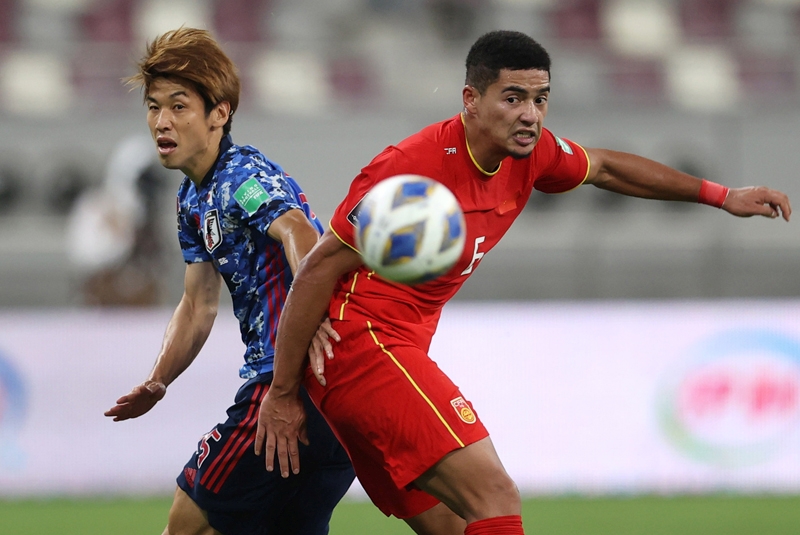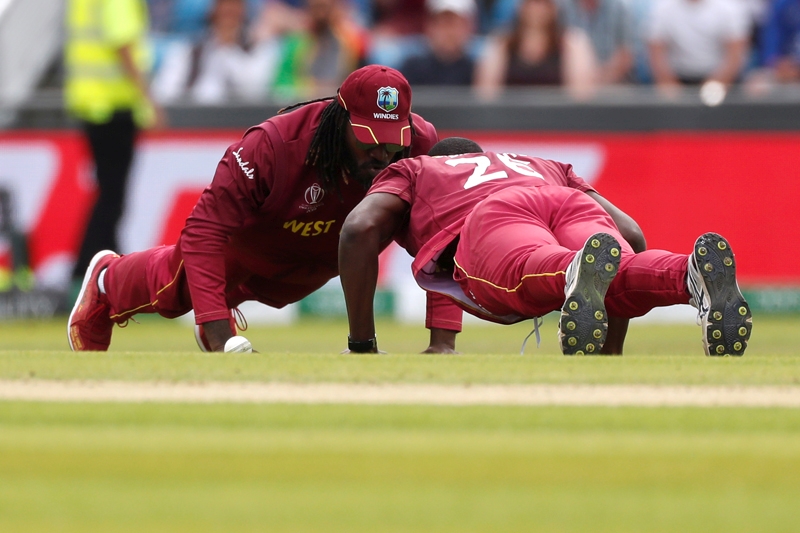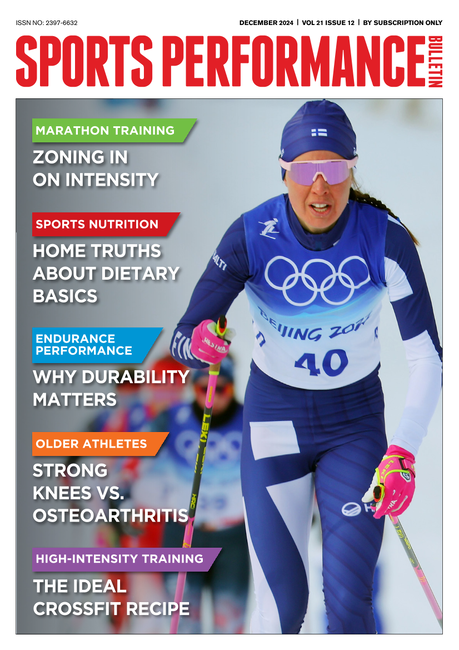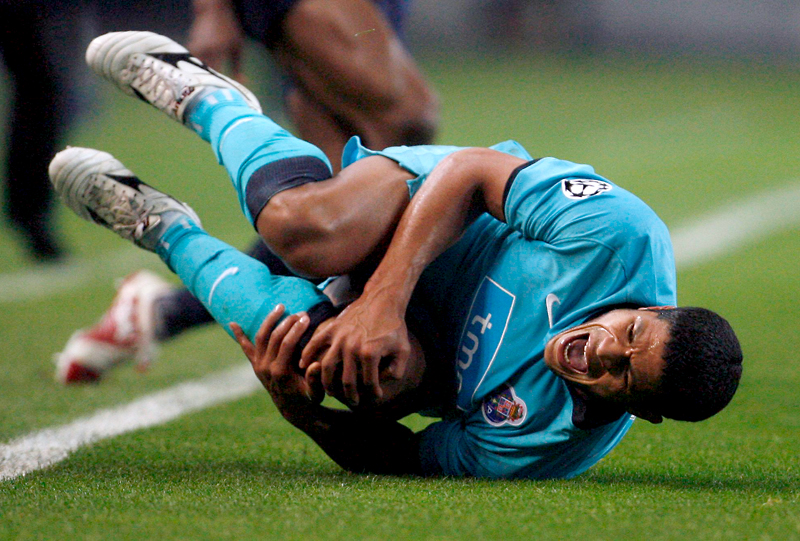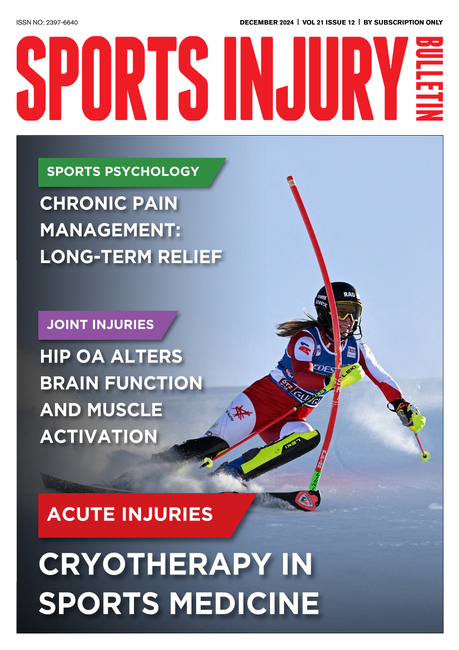You are viewing 1 of your 1 free articles. For unlimited access take a risk-free trial
Soccer performance: why calves matter!

SPB explores new research on calf muscle stretching and soccer performance
Like many ball sports, high levels of soccer performance require a combination of physical attributes. These include high levels of speed, acceleration, coordination and agility. Together, these require the right kind of fitness training to develop high levels of endurance and sprinting capacity (see this article), and of course plenty of skills training. However, one important aspect of fitness that is sometime overlooked when developing soccer fitness is joint flexibility and range of motion (RoM).Previous research shows that good levels of lower limb flexibility are required to provide speed, coordination and agility(1,2).Moreover, it is also known that athletes require adequate joint RoM to move effectively, without inducing injury(3). When it comes to soccer performance, there’s robust evidence that players with larger range of lower-limb RoM are significantly less like to suffer a muscle strain injury to these muscle groups during a competitive season compared to players with a smaller(4).
Improving RoM
Given that adequate levels of RoM are linked with reduced injury, what kind of flexibility training can help improve RoM, and are there any performance benefits from such training? Studies have shown that acute stretching (ie stretching carried out just before athletic activity) increases the RoM and the length of musculotendinous units, improving reflexes(5). When it comes to soccer-specific performance, research also shows that dynamic (ie not static) stretching of lower limb muscles such as the gluteus (buttocks), hamstrings, quadriceps and calf muscles increases joint flexibility, thereby producing an immediate beneficial effect compared to no stretching and static stretching. These positive effects include performance gains in the following:- Sprinting(6,7)
- Vertical jumping(8)
- Agility performance(9)
- Ball handling and kicking accuracy(10,11)
Which muscle groups really matter?
The list of improved attributes from dynamic stretching outlined above is pretty impressive. However, given that not all players will have the time or motivation to engage in properly stretching all the major lower limb muscles and joints prior to a training session or match, a question that arises is whether stretching any of these muscle groups is especially important for soccer performance. In other words, are there any muscle groups/joints that soccer players should pay special attention to when it comes to a dynamic stretching routine?This is tricky to answer as most of the previous studies investigated the effects of stretching multiple muscle groups together, which makes it difficult to separate out the individual contributions from each muscle group stretch(11,12). One joint of special interest however could be the ankle; good ankle flexibility is associated with dynamic balance ability(13,14). That’s important because very recent research shows that dynamic balance ability is a key contributing factor for ball control, kicking accuracy and speed and agility performances(15,16). Therefore, stretching the calf muscles (the main movers of the ankle – see figure 1) could in theory greatly benefit soccer performances.
Figure 1: Lower limb muscles involved with ankle movement*

The main muscles of the calf are shown separately in blue. The two main muscles are gastrocnemius and soleus; the soleus muscle lies inferior (underneath) the gastrocnemius. The main function of soleus is to lift the heel off the ground (plantarflexion) when the knee is bent. Gastrocnemius provides most of the lifting force when the knee joint is straight. *Image adapted from ‘Visible Body’ (www.visiblebody.com/ ). Visible Body provides a wide array of anatomical 2D and 3D visualizations, which are ideally suited to health professionals, physiotherapists and trainers – check out their excellent site!
In terms of soccer performance, very few investigations have been carried out on calf muscles in soccer players, and many of those that have been carried out have focused only on the gastrocnemius muscle while neglecting the soleus muscle(17). However, the soleus is important too, since it is a powerful single-joint muscle that works with the gastrocnemius to accomplish all types of weight-bearing activities, such as speed and jump movements(18). Ideally, what is needed to answer this question is a study that explores the effect of added dynamic soleus stretching on ankle flexibility, dynamic balance, calf strength and speed performances. In short, can dynamic stretches for the soleus improve key aspects of soccer performance?
New research
The good news is that a brand new study by a team of Chinese and Australian researchers has sought to answer this very question. In the study, which was published in the journal ‘Biology’, the researchers investigated whether added soleus stretching in a regular stretching protocol would have greater benefits for ankle flexibility, dynamic balance and functional performance in soccer players(17).Fourteen male soccer players, all with at least four years of training experience took part in the study, which compared the performance effects of different pre-training stretching protocols (see table 1):
- Regular dynamic stretching – where the participants were instructed to perform three stretching repetitions for about 30 seconds of the hamstring, quadriceps femoris (frontal thigh) and gastrocnemius muscles of each leg.
- Regular dynamic stretching plus soleus dynamic stretching – identical to above but with additional stretching of the soleus muscle.
- No stretching (control) – where the participants simply sat passively for eight minutes (the time taken to stretch).
Table 1: Details of stretching protocols used
Figure 2: Physiological and performance testing following stretching protocols

Experimental protocols for a) flexibility test, b) standing heel raise test (dynamic balance and muscle strength) and c) functional performance test (sprinting and curved running).
The findings
What effect did the pre-exercise stretching have and did the addition of extra soleus stretching provide extra performance benefits? The main findings were as follows:- Compared with the no-stretching control trial, significant increases in ankle RoM were found in the soleus and regular stretching groups. However, ankle RoM was significantly greater when soleus stretching was added (67.8 degrees) compared to regular stretching (63.0 degrees).
- In the heel raise test, both the regular and extra soleus stretching conditions led to larger maximum plantarflexion forces but the additional soleus stretching did not result in a significant advantage.
- In the functional performance tests, both stretching conditions improved times compared to no stretching. The additional soleus stretching resulted in a fractionally faster 20-metre sprint time than regular stretching (3.12 vs 3.13 seconds) but the difference was so tiny as to be insignificant.
- Possibly the biggest finding was that adding extra soleus stretching produced a very large improvement in curved running times; the regular-stretching condition resulted in average times of 12.58 seconds whereas adding in extra soleus stretching slashed the average time to 12.24 seconds!
Practical implications for soccer and other team-sport players
The clear implication from these findings is that performing additional dynamic soleus stretching prior to activity improves ankle RoM, leading to greater plantarflexion (heel-lift) strength and better curved running performance compared with a regular dynamic stretching protocol (hamstrings, quads, glutes and gastrocnemius only). In plain English, incorporating soleus stretching into a regular pre-training or pre-match stretching protocol is recommended for improved ankle strength and soccer performance. And given the similarities in physical demands, this recommendation is likely to be relevant for other team sport players too – eg rugby, basketball etc.However, a couple of caveats are in order; firstly, the study only looked at 14 players. Ideally, a follow up study with a larger sample size would provide even more certainty of the benefits of soleus stretching. Secondly, although these findings are likely to be relevant for female players, the slightly different female anatomy compared to males (eg wider pelvis width and ‘Q angle’ of the legs) means that we cannot be sure until the same kind of research is conducted. That said, there would be no downside for female players to adopt a ‘try it and see’ approach.
A final implication of this research is that it seems the often neglected soleus muscle plays an important role in maximal effort and change of direction running. Therefore, team sport athletes should consider ensuring that any resistance program also works on soleus strength. The classic soleus strength exercise is the seated calf raise. Unfortunately, very few gyms nowadays have dedicated seated calf raise machines; however, the soleus muscle can easily be targeted with improvised exercises. The excellent video clip by Total Fitness Bodybuilding shown below provides some great ideas for those who are unsure of how to train the soleus muscle. Happy training!
References
- Sci. Med. Sport. 2011;14:90–92
- Sport Rehabil. 2019;29:527–532
- Strength Cond. Res. 2010;24:2698–2704
- Strength Cond. Res. 2007;21:1155–1159
- Physiol. Nutr. Metab. 2016;41:1–11
- Strength Cond. Res. 2010;24:2096–2101
- Strength Cond. Res. 2015;29:3412–3423
- Sports Med. Phys. Fit. 2017;57:330–337
- Strength Cond. Res. 2011;25:1647–1652
- Strength Cond. Res. 2010;24:950–956
- Mov. Sci. 2017;54:63–72
- Sports Sci. Med. 2014;13:403–409
- J. Sports Phys. Ther. 2013;8:121–128
- Sci. Sports Exerc. 2004;6:1397–1402
- Klin. J. Sports Sci. 2020;12:16–22
- J. Sci. Res. Publ. 2021;11:127
- Biology (Basel). 2022 Mar; 11(3): 374
- PLoS ONE. 2013;8:e52943
Newsletter Sign Up
Testimonials
Dr. Alexandra Fandetti-Robin, Back & Body Chiropractic
Elspeth Cowell MSCh DpodM SRCh HCPC reg
William Hunter, Nuffield Health
Newsletter Sign Up
Coaches Testimonials
Dr. Alexandra Fandetti-Robin, Back & Body Chiropractic
Elspeth Cowell MSCh DpodM SRCh HCPC reg
William Hunter, Nuffield Health
Keep up with latest sports science research and apply it to maximize performance
Today you have the chance to join a group of athletes, and sports coaches/trainers who all have something special in common...
They use the latest research to improve performance for themselves and their clients - both athletes and sports teams - with help from global specialists in the fields of sports science, sports medicine and sports psychology.
They do this by reading Sports Performance Bulletin, an easy-to-digest but serious-minded journal dedicated to high performance sports. SPB offers a wealth of information and insight into the latest research, in an easily-accessible and understood format, along with a wealth of practical recommendations.
*includes 3 coaching manuals
Get Inspired
All the latest techniques and approaches
Sports Performance Bulletin helps dedicated endurance athletes improve their performance. Sense-checking the latest sports science research, and sourcing evidence and case studies to support findings, Sports Performance Bulletin turns proven insights into easily digestible practical advice. Supporting athletes, coaches and professionals who wish to ensure their guidance and programmes are kept right up to date and based on credible science.

